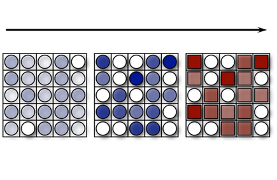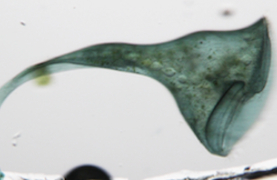This week in PLOS Biology
In PLOS Biology this week you can read about the division of labour between germ cells and soma, the use of RNA interference to study morphogenesis of a giant single-celled organism and a role for RNA mimicry in the assembly of ribosomes.
Multicellular organisms tend to have a set of cells – the germline – which are responsible for propagating the next generation, and are segregated from the somatic cells that do all the work to keep the body functioning. But what exactly drives this? Heather Goldsby, Benjamin Kerr and co-authors, in their new research article, used experimental evolution of digital organisms to show that the mutagenic side-effects of performing metabolic work can themselves trigger germ-soma differentiation in multicellular organisms. They argue that the soma can afford to perform this ‘dirty work’ while germ cells must keep their DNA pristine for future multicellular offspring. Read more in the accompanying synopsis.
Mark Slabodnick, Wallace Marshall and colleagues showcase the use of the giant ciliate Stentor coeruleus as a model for studying morphogenesis and regeneration in single-celled organisms. This aquatic filter feeder has remarkably distinct body parts and is known for its ability to regenerate from a tiny part of itself. This study demonstrates that RNA interference can be used to study it and that a kinase regulator protein Mob1 is required for its normal development and regeneration. You can also read more in the accompanying synopsis.
The Ribosome is a large and very complex molecular machine, found in all living cells and responsible for protein synthesis – the process by which new ribosomes are assembled is similarly complex. In their new research paper, Jérôme Loc’h, Nicolas Leulliot and colleagues determine the structure of the ribosome assembly factor Fap7 bound to a ribosomal protein, revealing that it chaperones a crucial step in the maturation of the nascent ribosome, using RNA mimicry and regulated by ATP hydrolysis.



